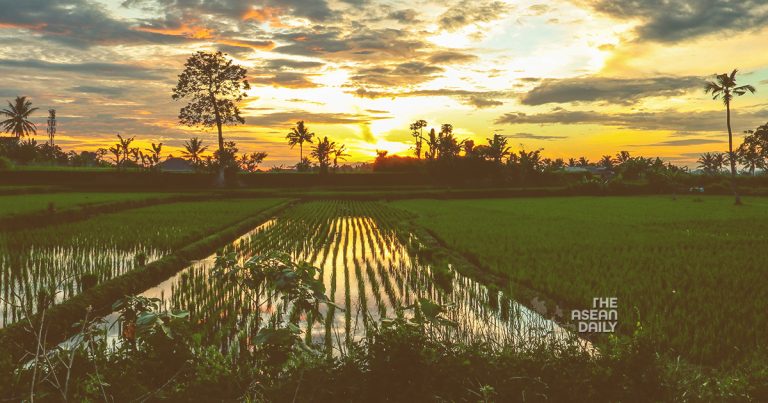3-8-2023 (JAKARTA) The Indonesian government is taking proactive measures to combat the anticipated long drought caused by the El Nino climate phenomenon by preparing 500,000 hectares of agricultural land for rice production. Agriculture Minister Syahrul Yasin Limpo announced on Wednesday (Aug 2) that several regions in the country have shown readiness to allocate agricultural land, ensuring sufficient national rice stock.
The designated regions for rice production include North Sumatra, South Sumatra, three regions in Java, and South Sulawesi, with additional buffer regions in South Kalimantan, NTB, Banten, and Lampung. Minister Syahrul expressed confidence that if the 500,000-hectare plan succeeds, it will effectively mitigate the impacts of El Nino.
President Joko Widodo, on the same day, instructed his staff to ensure the availability of rice following a meeting addressing rice availability and affordability in Indonesia. This initiative aligns with the ongoing food estate project initiated in 2020, which aims to cover 770,000 hectares, more than ten times the size of Singapore, with the goal of reducing food imports.
Indonesia’s efforts to bolster agricultural productivity recall the ambitious Mega Rice Project of the mid-1990s, which aimed to convert one million hectares of land into paddy fields in Central Kalimantan but eventually failed due to unsuitable peatland conditions.
The government has already mapped the potential worst impacts of El Nino on rice stock, projecting a deficit of 300,000 to 1,200,000 tonnes during the peak of the phenomenon from August to September this year. However, the additional 500,000 hectares designated for rice production instills optimism in effectively managing the effects of El Nino on national food stocks, particularly rice.
As of September 2023, the Agriculture Ministry reported that the price and stock of rice remain stable, with the government maintaining 2.7 million tonnes of rice stock. Minister Syahrul expressed that harvesting 800,000 hectares of rice fields monthly would sufficiently meet the country’s rice demand of around 2,000,000 tonnes.
Rice was selected as the food reserve to tackle severe weather threats, considering its essential role in Indonesia’s diet, where its participation rate stands at 100 per cent across the archipelago.
The boosted production in the 500,000 hectares is expected to yield approximately 3 million tons of dry grain products, equivalent to approximately 1.5 million tons of rice, according to the state news agency Antara.
While Indonesia takes measures to combat El Nino’s impacts, neighboring countries in the region are also grappling with the effects of the weather pattern. In Malaysia, farmers are adopting UV-resistant plastic sheets to shield crops from the scorching heat and lower crop yields. Additionally, countries in Southeast Asia are preparing for a higher risk of transboundary haze in the upcoming months, a recurring issue in the region.
In the Philippines, President Ferdinand Marcos Jr, who also serves as agriculture secretary, directed all government agencies in June to implement water conservation measures due to the looming long dry spell brought on by El Nino. The World Health Organization (WHO) is also preparing for an increased spread of viral diseases like dengue, Zika, and chikungunya, which are linked to El Nino’s temperature impacts, as WHO’s Director for Environment, Climate Change, and Health, Maria Neira, stated in June.




